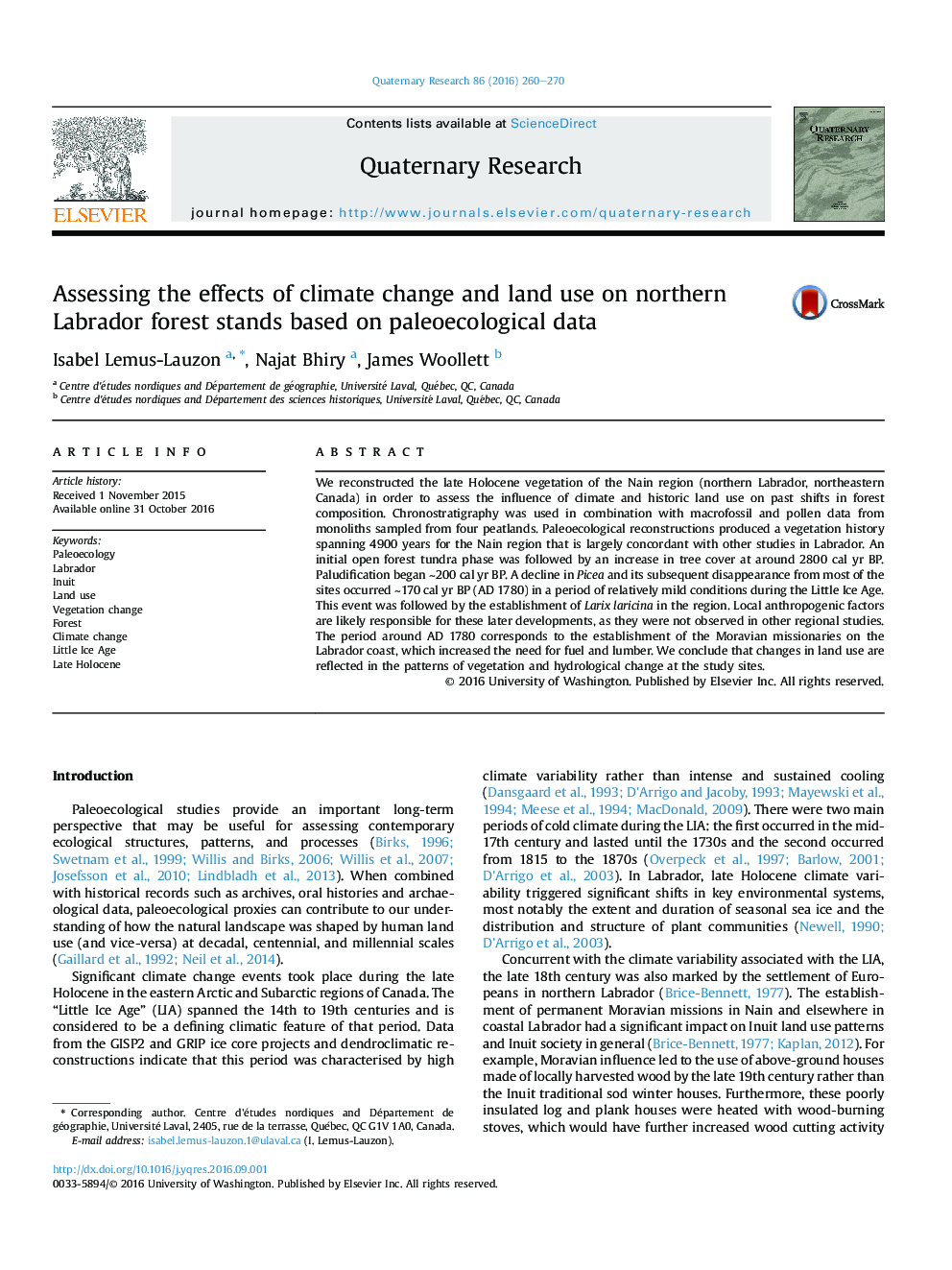| Article ID | Journal | Published Year | Pages | File Type |
|---|---|---|---|---|
| 7453361 | Quaternary Research | 2016 | 11 Pages |
Abstract
We reconstructed the late Holocene vegetation of the Nain region (northern Labrador, northeastern Canada) in order to assess the influence of climate and historic land use on past shifts in forest composition. Chronostratigraphy was used in combination with macrofossil and pollen data from monoliths sampled from four peatlands. Paleoecological reconstructions produced a vegetation history spanning 4900 years for the Nain region that is largely concordant with other studies in Labrador. An initial open forest tundra phase was followed by an increase in tree cover at around 2800 cal yr BP. Paludification began â¼200 cal yr BP. A decline in Picea and its subsequent disappearance from most of the sites occurred â¼170 cal yr BP (AD 1780) in a period of relatively mild conditions during the Little Ice Age. This event was followed by the establishment of Larix laricina in the region. Local anthropogenic factors are likely responsible for these later developments, as they were not observed in other regional studies. The period around AD 1780 corresponds to the establishment of the Moravian missionaries on the Labrador coast, which increased the need for fuel and lumber. We conclude that changes in land use are reflected in the patterns of vegetation and hydrological change at the study sites.
Keywords
Related Topics
Physical Sciences and Engineering
Earth and Planetary Sciences
Geology
Authors
Isabel Lemus-Lauzon, Najat Bhiry, James Woollett,
